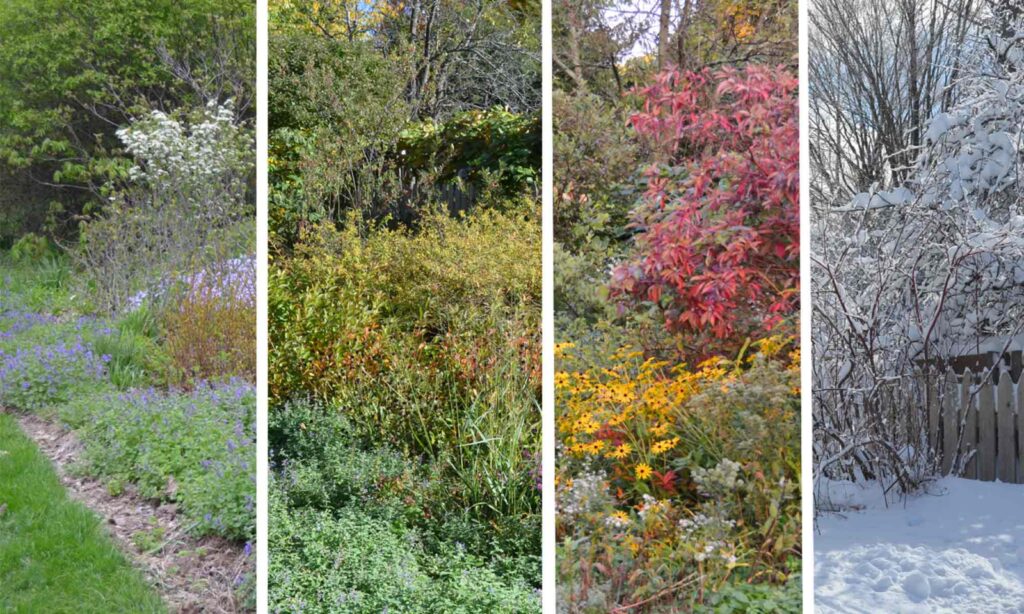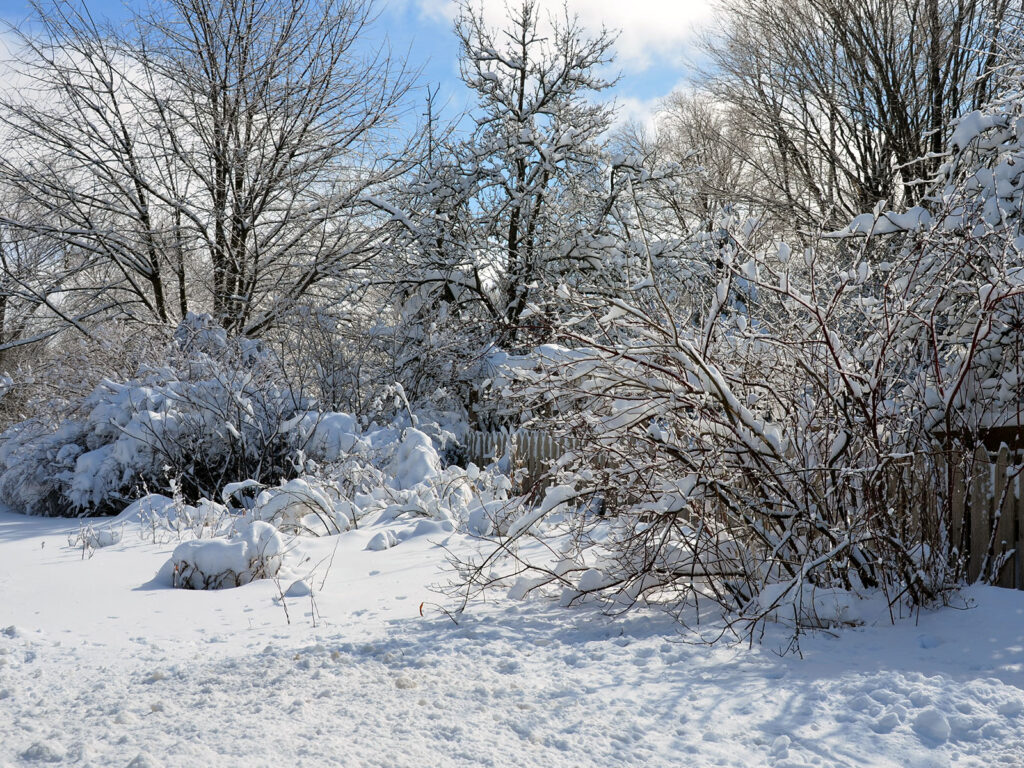
We have very definite seasons here in Central New York (to say the least). Since our yard is not dominated by lawn, there’s a great variety in our habitat garden through the year, making it more enjoyable than the sterile landscapes of most suburban yards.
Although people (at least here up north) think of spring, summer, and fall as the gardening season, wildlife needs habitat all year. We try to provide for their needs through all the seasons.

Winter is the most different from the other seasons. Gone are the flowers, gone are the leaves, gone are the insects — at least the ones flying around, ready to become an instant meal. They’re there in the leaf litter, in dead flower stalks, under bark and other places, though.
Winter is a challenging time for creatures that remain active through the long, cold, snowy Central New York winter, and we try to provide what they need to make it through to spring.
Changing through the seasons
Reflections
Gardeners are certainly aware of the march of seasons. Sequential blooming is the basis of flower border design; fruits are harvested in order, currants before blueberries, then blackberries, then grapes. But we decide what to plant from our own point of view. A book may advise against a certain shrub because, although the berries are decorative, the display is too quickly eaten by the birds. Or a gardener may decide not to bother with August-blooming flowers because the family is off to the beach that month and would not appreciate the display. Such balloons need popping; flowers don’t bloom or bushes berry for our admiration. From the March hellebore to the October aster, from the first strawberry to the last rose hip, each species times its bloom and fruit to the needs of those who pollinate its flowers and plant its seeds.
~ Sara Stein, Noah’s Garden pp. 53-54
